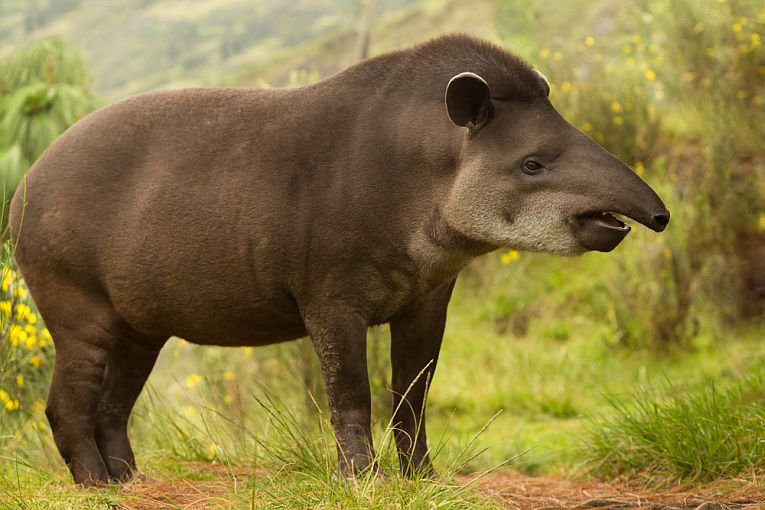Ecuadorian tapir image; Credit: © Shutterstock
The classic rainforest contains 40% of all of our carbon in the form of wood, leaves, roots and now it has been proved conclusively to need animal help. The varied vertebrate fauna of the jungle
seems to play a role in the ecosystem that was once under-appreciated. With one eye on the future market in carbon, the fauna seem to be a much greater player than was thought possible.
The great ironwoods such as Eusideroxylon and the pan-tropical dipterocarps and their equivalents which form huge bastions of obvious hard wooded carbon in Asian, African and American forests have seeds that need to be dispersed. While helicopter seeds and insect dispersal suits smaller seeds, many large seeded fruits require other help. A paper by Carolina Bello of Universidade Estadual Paulista in SÃ £o Paulo and 8 colleagues from Brazil and the UK, Spain and Finland, has explained how the birds and monkeys are key actors on the rainforest stage for the long term.
As usual it is the loss of these species that has made the problem obvious. Within the titleDefaunation affects carbon storage in tropical forests
the human effect of removal of large animals becomes obvious, but how is the effect accomplished? The authors surprise us with new climate change champions, currently lost to overhunting and large areas of habitat loss. The pet trade and bushmeat are the major culprits, with parrots and bush-babies, hawks and great apes readily consumed for the greedy markets.
The trees themselves are critically endangered, which makes this problem much more significant. To recover both now and in the future, the age-old efficiency of the ecosystem must be re-established. While subsistence hunters have killed off the breeding groups of birds and mammals over centuries, softwood trees have replaced the great trees that are dispersed in the faeces of animals. The percentage of carbon stored in the lesser trees has dropped alarmingly. One of the authors, Carlos Peres of the University of East Anglia, believes that even the protected areas have lost most of their large fauna, although small mammals, bats and other birds remain to disperse small seeds using other dispersal techniques. Without big species to digest the big seeds, the carbon stored in these areas will continue to drop steeply.
Data on the terrible loss of carbon from deforestation was reported long ago in a story on Satellite tracking of carbon losses Within American tropical forests alone, 118 billion tonnes of carbon were claimed to be stored. Such figures as those noted here will be used to judge each nation's contribution to carbon dioxide release.
It does seem remarkable that the world's carbon footprint can be affected by relatively few animals. Perhaps the only comparison could be with the largest creatures such as elephants, whose effect on their habitat is easily seen to be enormous. Forests in Africa, SE Asia and the Amazon must be assumed to behave in exactly the same ways as those in the Atlantic Forest concerned in this research. The fauna, the trees (eg. dipterocarps) and the people all resemble the basic players found in this tragic story. Even the food sources of people in the Brazilian forests have been seen to be reduced as logging and loss of fauna both contribute to the loss of population in Brazil nut, wild cacao and aà §ai trees.










